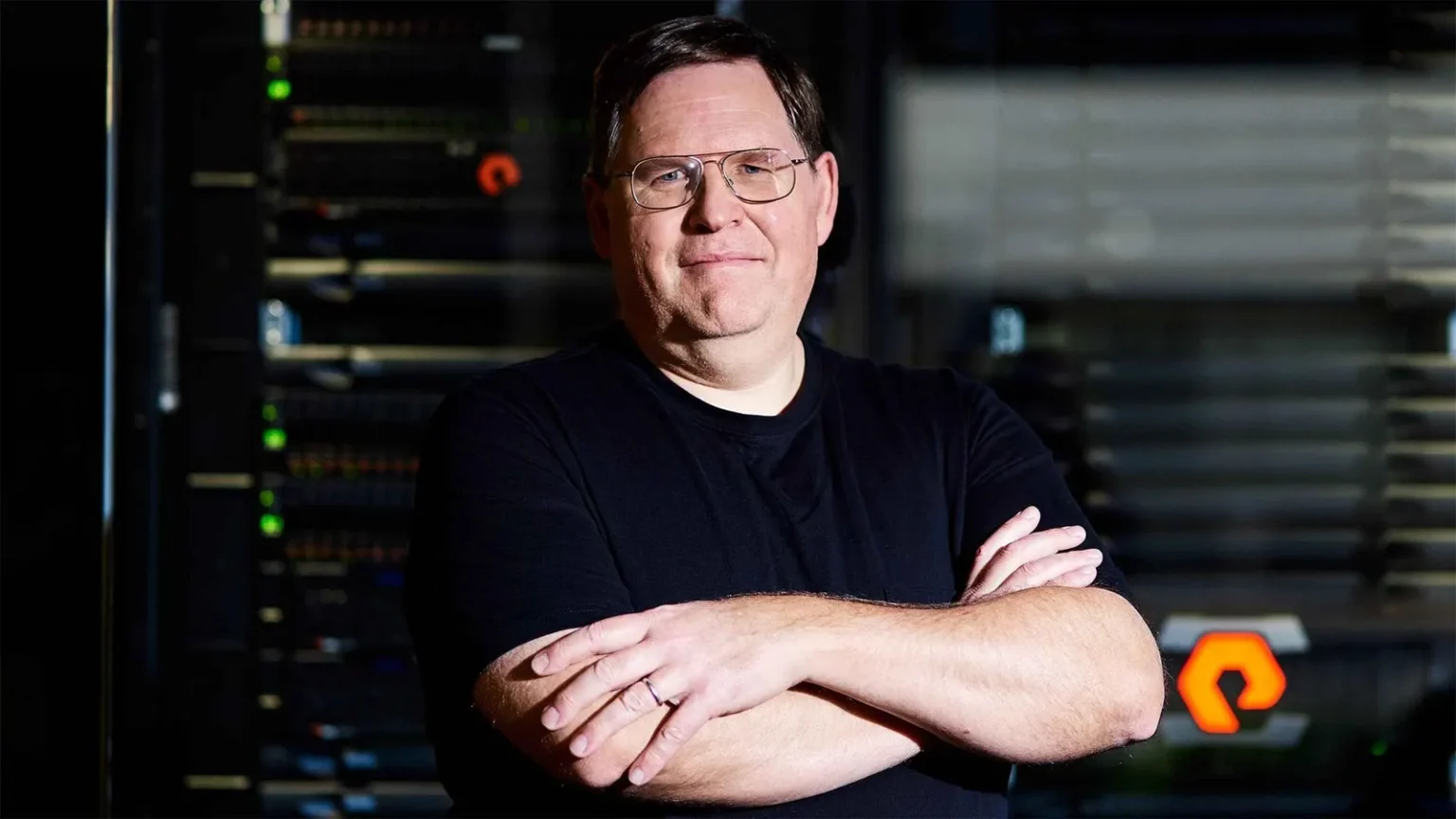John Colgrove: The Unassuming Billionaire Behind Pure Storage’s AI-Driven Success
In a modest hotel room in Vienna, John “Coz” Colgrove appears on Zoom wearing his trademark uniform – a plain black T-shirt, gray basketball shorts, and size 16 New Balance sneakers. This unassuming 62-year-old, who actively avoids clothes with visible logos, hardly fits the stereotype of a newly-minted tech billionaire. But that’s exactly what he is. As the cofounder and “chief visionary officer” of Pure Storage, Colgrove’s 4% stake in the $30 billion company is now worth approximately $1.2 billion, thanks to the company’s soaring stock price amid the AI revolution. When asked about his billionaire status, Colgrove deflects with characteristic modesty: “I’m focused on the fun and excitement of building a great company. I appreciate the success Pure has had.” This understated response belies the remarkable journey of both the man and his company, which is experiencing what could be described as its breakthrough moment as artificial intelligence drives unprecedented demand for fast, reliable data storage solutions.
Founded in 2009 to capitalize on flash drive technology, Pure Storage is now riding the wave of the AI boom with impressive results. The company’s stock has surged 70% in the past year, reaching record highs, partly fueled by a significant deal with Meta to support its AI supercomputers – a partnership that analysts estimate could boost profits by up to $1 million in the coming year. Pure Storage’s financial performance reflects this momentum, with revenue climbing to a record $3.2 billion last year (up 12%), while net income jumped an impressive 74% to $107 million in 2024. What makes this growth particularly notable is that it’s occurring against a backdrop of relatively flat overall demand in the data storage industry. While global spending on storage systems increased just 2.5% last year to $33.5 billion, McKinsey projects that AI-related demand will drive up to $800 billion in storage spending over the next five years. Flash memory, Pure Storage’s specialty, though currently two to three times more expensive than traditional hard drives, offers the speed and efficiency that AI applications desperately need – creating what Colgrove describes as a “gigantic opportunity” as the technology approaches a “crossover point” with conventional storage solutions.
For Colgrove, Pure Storage’s current success represents the culmination of a vision he’s held for nearly two decades. When he founded the company sixteen years ago, he was already convinced that flash drives would eventually replace the hard drives most companies were using for data storage. Investors shared his conviction, pouring over $525 million in venture capital into Pure Storage within its first five years. By the time it went public in October 2015, the company boasted a $3.6 billion valuation. Colgrove’s foresight wasn’t accidental but rather the product of decades of experience in the storage industry and a lifelong passion for problem-solving. Growing up in a small New Jersey town as the youngest of three children, he developed an early love for science, influenced by his research chemist father. Although he claims he wasn’t a particularly good student – “I didn’t drop out, but I wasn’t far off from it” – Colgrove discovered programming through a high school accelerated math program and often skipped classes to work on personal coding projects. “I’m generally not a conformist,” he admits, a trait that would serve him well in his eventual disruption of the storage industry.
Colgrove’s journey to Silicon Valley began after graduating with a computer science degree from Rutgers University. While working as a computer operator at Bell Labs and still living with his mother, he landed a job interview in the Bay Area. “I was still living at home with my mom and thought to myself, ‘well, I’m going to still be living with her when I’m 50 if I don’t do something about it,'” he recalls. In 1987, he accepted a position as a software engineer at Amdahl Corporation and moved west, bringing his 78 boxes of books (mainly science fiction and history) and just five boxes of “other stuff.” Two years later, he joined data storage company Veritas Technologies as a founding engineer, staying through its IPO in 1993 and Symantec’s $13.5 billion acquisition of Veritas in 2005. By 2008, at age 46, Colgrove had achieved financial security as the chief technology officer at a division of the combined companies and decided to retire. He spent the next year and “several million dollars” building a dream house in Los Altos, but the process made him realize he wasn’t ready for retirement. “After I finished the house, I realized I wasn’t ready to be retired,” he says. “So I started looking for a startup to join, but couldn’t find anybody doing something that interesting.”
In 2009, Colgrove joined Palo Alto-based venture capital firm Sutter Hill Ventures as an entrepreneur-in-residence, where he met his eventual cofounder John Hayes. Together, they developed a business concept around flash-based data storage, with Colgrove insisting on staying in a technical role rather than becoming CEO. Scott Dietzen was brought in to lead the company from 2010 to 2017, followed by current CEO Charles Giancarlo. From the beginning, Pure Storage took an aggressive approach, launching what Dietzen called a “full frontal assault” on established industry players rather than settling for a smaller niche. This bold strategy paid off: according to Louis Miscioscia of Daiwa Capital Markets, Pure Storage emerged as the sole survivor among over a dozen flash startups from that era, largely because it directly challenged market leader EMC’s dominance. The competition wasn’t without controversy – EMC sued 44 former employees who joined Pure Storage, alleging intellectual property theft, a case that was eventually settled in 2016 with Pure Storage paying $30 million to Dell (which had acquired EMC). Despite these challenges, Pure Storage continued to grow, establishing itself as a formidable player in the storage industry through what industry analyst Jordan Nanos describes as “strong execution in the legacy datacenter business, taking share from the likes of Dell EMC, HPE and NetApp.”
Now, however, Pure Storage finds itself in a position similar to the legacy players it once disrupted, with a new generation of startups targeting its market share as the AI revolution accelerates. The company’s recent licensing deal with Meta – allowing the tech giant to use Pure Storage’s software and intellectual property to build its own storage solutions – represents both an opportunity and a challenge. While the deal will generate significant profit without requiring hardware production, it may also signal that Meta is moving away from purchasing traditional data storage products from Pure Storage. Despite these potential headwinds, Colgrove remains confident in his company’s strategy and its more than 13,500 enterprise customers. “The one thing you can be sure of is that AI is developing so fast that what people need in a year, two years, three years will be radically different than today, so they need tremendous agility, and that is one of the things that we sell more than anything,” he says. As Pure Storage navigates this rapidly evolving landscape, the company’s future – and Colgrove’s billionaire status – will depend on its ability to maintain its innovative edge. But for the unassuming founder who still dresses the same way he has for decades, the focus remains on solving problems rather than counting commas in his net worth.















